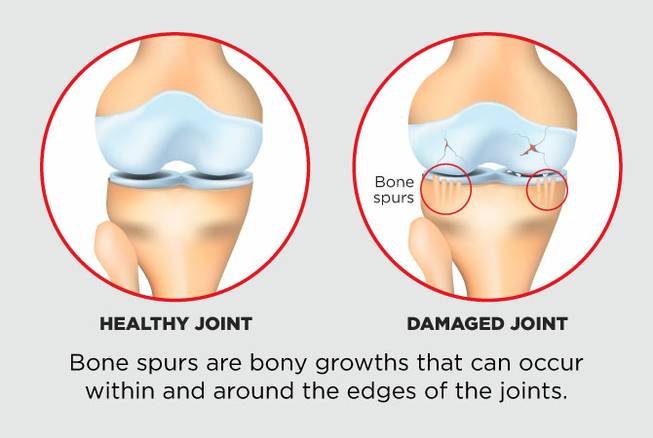
Monday, Nov. 6, 2017 | 2 a.m.
Having strong bones and joints is key to maintaining overall physical health, but there are many factors that could lead to troubled joints. Joints are vulnerable to a wide array of potential problems, such as injuries, arthritis and bone spurs.
Fortunately, the body is resilient, and making important lifestyle modifications can help protect joints from wear and tear.
“Joint pain is common for many people, but most things can take care of themselves without surgery or further intervention,” said John Baldauf, MD, joint replacement specialist and board-certified orthopedic surgeon at Southern Hills Hospital and Medical Center.
Understanding the risk factors and finding solutions to fit your lifestyle can help ensure a lifetime of healthy joints.
Bone spurs
Bone spurs are bony growths that can occur within and around the edges of the joints. They’re commonly a result of osteoarthritis.
“When the joint starts to break down, the bone tries to heal itself and can lead to an overgrowth in bone tissue, causing bone spurs,” Baldauf said. Although bone spurs can be considered a side effect of osteoarthritis, in some cases they can be an early indicator. Patients may not even know they have arthritis until bone spurs are apparent on an X-ray.
“Usually, we see bone spurs in advanced cases of arthritis, but even in early cases, bone spurs almost always indicate a larger problem within the joint,” Baldauf said.
Treatment options
There are surgical options to treat bone spurs that include removing the growth itself, but treating the underlying condition that caused the bone spur is usually the more important concern. For most patients, this means addressing osteoarthritis in the joint.
“There are five things we can do for the joint: medication, anti-inflammatory injections, physical therapy, bracing and surgery. When people have a lot of pain, we’ll explore surgical options but oftentimes it’s not necessary,” Baldauf said.
Though there are many treatment options for patients with osteoarthritis, lifestyle modifications can go a long way toward prevention and slowing of the disease.
Tips for promoting joint health
1. Minimize excess strain on the joint
The No. 1 factor in people minimizing joint pain — and preventing pain from developing — is low body weight. Losing weight and/or maintaining a healthy weight prevents undue strain on the skeletal system and lessens daily joint impact.
“Being overweight is extremely problematic for the joints — it can be like carrying the weight of another person around all the time,” Baldauf said. “Sometimes, patients need to lose weight before they’re safe to operate on, but once they do, the pain may resolve itself without surgery.”
2. Minimize impact activities
Baldauf describes the joints as the shock-absorbers of the body, so minimizing high-impact activities can be helpful for many people.
Patients who have advanced osteoarthritis can benefit from wearing orthopedic shoes daily, or slippers around the home rather than roaming barefoot.
Athletes, particularly those who engage in high-impact fitness routines, also should invest in quality, supportive shoes. Shoes should be replaced regularly as well.
3. Reduce inflammation
Ice, over-the-counter anti-inflammatory medications and rest are important when experiencing joint pain.
“The body has incredible healing potential, so people need to listen to its cues and avoid overuse injuries. If you’re experiencing pain, focus on calming the inflammation first. It’s when patients continue to aggravate the injury that they need to see a doctor for evaluation,” Baldauf said.
The right kind of exercise can be beneficial
When addressing joint problems, exercise can be a Catch-22. Strong muscles can help alleviate pressure on the joints, but certain activities can worsen, and even create, joint pain. Baldauf recommends low-impact, strengthening fitness routines such as swimming, cycling and using an elliptical machine. Muscle-building exercises, such as weight training, can also be helpful.
Note for runners: While there are many benefits of running, it can be one of the most stressful, high-impact activities for the joints. “Running really is a high for many people, and I’ve noticed that runners tend to be very resistant about changing their routine,” Baldauf said. Most people won’t have to give up running completely, but it can be helpful to incorporate other activities throughout the week, take plenty of rest days, and not push themselves when injured.

Join the Discussion:
Check this out for a full explanation of our conversion to the LiveFyre commenting system and instructions on how to sign up for an account.
Full comments policy